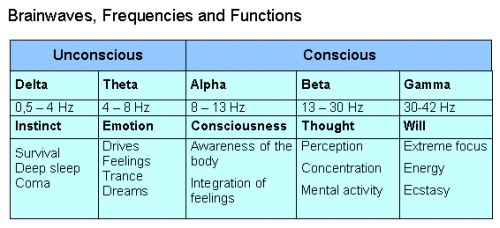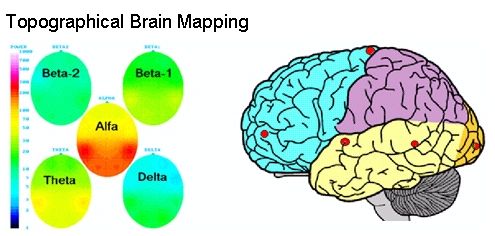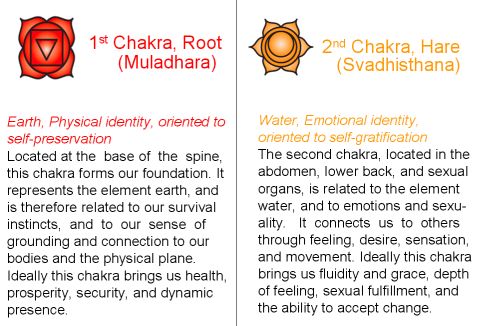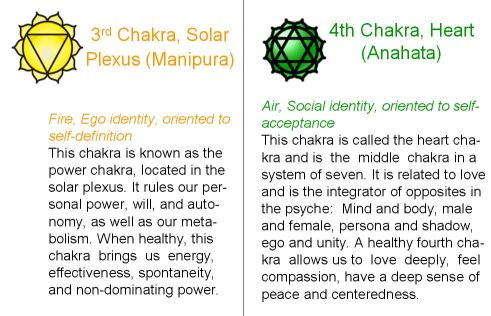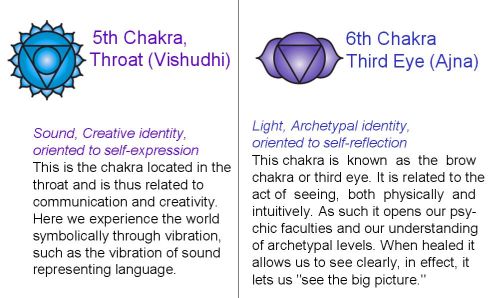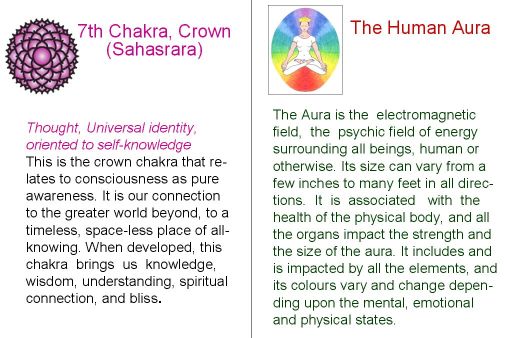The science explaining why you should meditate every day.
I realized today that in all my posts regarding the brain and how to sculpt it with mindfulness, I’ve never actually explained
how and why meditation
works. Specifically, the science behind how your brain changes the
longer you meditate. I think this is important for many reasons, but one
of the most salient is that this information serves as a great
motivator to keep up a daily practice (or start one).
I’m sure
you’ve heard people extol the virtues of meditation. You may be
skeptical of the claims that it helps with all aspects of life. But, the
truth is, it does. Sitting every day, for at least 15-30 minutes, makes
a huge difference in how you approach life, how personally you take
things and how you interact with others. It enhances compassion, allows
you to see things more clearly (including yourself) and creates a sense
of calm and centeredness t
hat is indescribable. There really is no
substitute.
For those of you who are curious as to how meditation changes
the brain, this is for you. Although this may be slightly technical,
bear with me because it’s really interesting. The brain, and how we are
able to mold it, is fascinating and nothing short of amazing. Here are
the brain areas you need to know:
- Lateral prefrontal cortex:
the part of the brain that allows you to look at things from a more
rational, logical and balanced perspective. In the book, we call it the Assessment Center. It is involved in modulating emotional responses (originating from the fear
center or other parts of the brain), overriding automatic
behaviors/habits and decreasing the brain’s tendency to take things
personally (by modulating the Me Center of the brain, see below).
- Medial
prefrontal cortex: the part of the brain that constantly references
back to you, your perspective and experiences. Many people call this the
“Me Center” of the brain because it processes
information related to you, including when you are daydreaming, thinking
about the future, reflecting on yourself, engaging in social
interactions, inferring other people’s state of mind or feeling empathy for others. We call it the Self-Referencing Center.
What’s interesting about the Medial PreFrontal Cortex (mPFC) is that it actually has
two sections:
- Ventromedial medial prefrontal cortex (vmPFC) – involved in processing information related to you and people that you view as similar
to you. This is the part of the brain that can cause you to end up
taking things too personally, which is why we referred to it as the
unhelpful aspect of the Self-Referencing Center in the book. (In
reality, this brain area has many important and helpful functions –
since we were focusing on overcoming anxiety, depression and habits you
want to change, we referred to it as unhelpful because it often causes
increases in rumination/worry and exacerbates anxious or depressive
thoughts/states/feelings.)
- Dorsomedial Prefrontal Cortex (dmPFC) – involved in processing information related to people who you perceive as being dissimilar
from you. This very important part of the brain is involved in feeling
empathy (especially for people who we perceive of as not being like us)
and maintaining social connections.
- Insula: the part of the brain that monitors bodily sensations
and is involved in experiencing “gut-level” feelings. Along with other
brain areas, it helps “guide” how strongly you will respond to what you
sense in your body (i.e., is this sensation something dangerous or
benign?). It is also heavily involved in experiencing/feeling empathy.
- Amygdala: the alarm system of the brain, what most refer to as the “Fear Center.”
It's a part of the brain that is responsible for many of our initial
emotional responses and reactions, including the “fight-or-flight”
response. (Along with the Insula, this is what we referred to as the Uh
Oh Center.)
The Brain Without Meditation – Stuck on Me
If you were to look at people’s brains before they began a meditation practice, you would likely see strong neural connections
within the Me Center and
between
the Me Center and the bodily sensation/fear centers of the brain. This
means that whenever you feel anxious, scared or have a sensation in your
body (e.g., a tingling, pain, itching, whatever), you are far more
likely to assume that there is a problem (related to you or your
safety). This is precisely because the Me Center is processing the bulk
of the information. What's more, this over-reliance on the Me Center
explains how it is that we often get stuck in repeating loops of thought
about our life, mistakes we made, how people feel about us, our bodies
(e.g., “I’ve had this pain before, does this mean something serious is
going on?) and so on.
Why is the Me Center allowed to process
information this way, essentially unabated? The reason this happens, in
part, is because the Assessment Center’s connection to the Me Center is
relatively weak. If the Assessment Center was working at a higher
capacity, it would modulate the excessive activity of the vmPFC (the
part that takes things personally) and enhance the activity of the dmPFC
(the part involved in understanding other’s thoughts and feelings).
This would lead us to take in all the relevant information, discard
erroneous data (that the Me Center might want to focus on exclusively)
and view whatever is happening from a more balanced perspective –
essentially decreasing the overthinking, ruminating and worrying that
the Me Center is famous for promulgating. One helpful way to think of
the Assessment Center is as a sort of “brake” for the unhelpful parts of
the Me Center.
The Brain on Meditation – I Can See Clearly Now
In
contrast, if you meditate on a regular basis, several positive things
happen. First, the strong, tightly held connection between the Me Center
(specifically the unhelpful vmPFC) and the bodily sensation/fear
centers begins to break down. As this connection withers, you will no
longer assume that a bodily sensation or momentary feeling of fear means
something is wrong with you or that you are the problem! This explains,
in part, why anxiety decreases the more you meditate – it’s because the
neural paths that link those upsetting sensations to the Me Center are
decreasing. Said another way, your ability to ignore sensations of
anxiety is enhanced as you begin to break that connection between the
unhelpful parts of the Me Center and the bodily sensation/fear centers.
As a result, you are more readily able to see those sensations for what
they are and not respond as strongly to them (thanks to your
strengthened Assessment Center).
Second, a heftier, healthier
connection forms between the Assessment Center and bodily sensation/fear
centers. This means that when you experience a bodily sensation or
something potentially dangerous or upsetting, you are able to look at it
from a more rational perspective (rather than automatically reacting
and assuming it has something to do with you). For example, when you
experience pain, rather than becoming anxious and assuming it means
something is wrong with you, you can watch the pain rise and fall
without becoming ensnared in a story about what it might mean.
Finally,
an added bonus of meditating is that the connection between the helpful
aspects of the Me Center (i.e. dorsomedial prefrontal cortex) – the
part involved in processing information related to people we perceive as
being
not like us – and the bodily sensation center – involved
in empathy – becomes stronger. This healthy connection enhances your
capacity to understand where another person is coming from, especially
those who you cannot intuitively understand because you think or
perceive things differently from them (i.e., dissimilar others). This
increased connection explains why meditation enhances empathy – it helps
us use the part of the brain that infers other people’s states of mind,
their motivations, desires, dreams
and so on, while simultaneously activating the part of the brain
involved in the actual experience of empathy (insula). The end result is
that we are more able to put ourselves in another person’s shoes
(especially those not like us), thereby increasing our ability to feel
empathy and compassion for everyone.
Daily Practice is Important
Essentially,
the science “proves” what we know to be true from the actual experience
of meditating. What the data demonstrate is that meditation facilitates
strengthening the Assessment Center, weakening the unhelpful aspects of
the Me Center (that can cause you to take things personally),
strengthening the helpful parts of the Me Center (involved with empathy
and understanding others) and changing the connections to/from the
bodily sensation/fear centers such that you experience sensations in a
less reactive, more balanced and holistic way. In a very real way, you
literally are changing your brain for the better when you meditate.
In
the end, this means that you are able to see yourself and everyone
around you from a clearer perspective, while simultaneously being more
present, compassionate and empathetic with people no matter the
situation. With time and practice, people do truly become calmer, have a
greater capacity for empathy and find they tend to respond in a more
balanced way to things, people or events in their lives.
However,
to maintain your gains, you have to keep meditating. Why? Because the
brain can very easily revert back to its old ways if you are not
vigilant (I’m referencing the idea of neuroplasticity here). This means
you have to keep meditating to ensure that the new neural pathways you
worked so hard to form stay strong.
To me, this amazing brain
science and the very real rewards gained from meditation combine to form
a compelling argument for developing and/or maintaining a daily
practice. It definitely motivates me on those days I don’t “feel” like
sitting. So, try to remind yourself that meditating every day, even if
it’s only 15 minutes, will keep those newly formed connections strong
and those unhelpful ones of the past at bay.
Addendum: For those wanting to start a meditation practice or who might be experiencing emotional issues, memories,
etc. when meditating, please seek out an experienced medtiation
teacher. I have received some comments from people stating they do not
believe meditation works (which is likely true for some people) or that
it could be harmful if done incorrectly. Obviously, meditation has been
very positive for me, but I have always worked with a meditation teacher
or mentor and I would suggest you do the same, as a teacher can help
you figure out what is right for you and guide you through any
difficulties you may be having.
Source:
Psychology Today
